- myFICO® Forums
- FICO Scoring and Other Credit Topics
- Personal Finance
- Re: Help Paying Down CC Debt
- Subscribe to RSS Feed
- Mark Topic as New
- Mark Topic as Read
- Float this Topic for Current User
- Bookmark
- Subscribe
- Mute
- Printer Friendly Page
Help Paying Down CC Debt
Is your credit card giving you the perks you want?
Browse credit cards from a variety of issuers to see if there's a better card for you.
- Mark as New
- Bookmark
- Subscribe
- Mute
- Subscribe to RSS Feed
- Permalink
- Report Inappropriate Content
Help Paying Down CC Debt
Hello everyone!
Well, here I am. I am currently in a mountain of debt, and I could use some help figuring out where to start, so I can free up more money monthly in order to reduce the debt burden and interest, as well as repair my scores. Here is all my current data, so maybe you guys can help me figure out where to start. My payment history is perfect minus one 30 day late and one Verizon Wireless account that went delinquent with a $132 balance with 4 months of late payments on that.
Balances -
Auto Loan - $6000 - $509 Payment
Auto Loan $5950 - $469 Payment
Venture - $20,450 / $22,500 limit
Amex BC Preferred - $18,900 / $19,300 limit
Barclay Titanium - $10,950 / $11,000 limit
Discover - $5750 / $6500 limit
Savor - $4970 / $5000 limit
Amazon Chase - $2930 / $3000 limit
Best Buy Citi - $1560 / $1650 limit
Rent - $1825/m
I make $66,000 a year roughly. I have about $10,000 of liquid available. I was thinking to start with getting the small ones paid first, then get the auto loans paid off to free up about another $1,000 a month and get the Savor paid next.
Feel free to ask me some questions in order to get more info. What would you guys do?
Thank you for your help!
- Mark as New
- Bookmark
- Subscribe
- Mute
- Subscribe to RSS Feed
- Permalink
- Report Inappropriate Content
Re: Help Paying Down CC Debt
Wanted to add my scores -
587 / 629 / 617
- Mark as New
- Bookmark
- Subscribe
- Mute
- Subscribe to RSS Feed
- Permalink
- Report Inappropriate Content
Re: Help Paying Down CC Debt
First thing: what are the current interest rates you are paying on each of your cards and what are the current mininum payments?
Also, what are the current interest rates on the 2 auto loans?
FICO 8 (EX) 838 (TU) 846 (EQ) 850
FICO 9 (EX) 850 (TU) 850 (EQ) 850
$1M+ club
Artist formerly known as the_old_curmudgeon who was formerly known as coldfusion
- Mark as New
- Bookmark
- Subscribe
- Mute
- Subscribe to RSS Feed
- Permalink
- Report Inappropriate Content
Re: Help Paying Down CC Debt
you didn't include interest, but that is a significant factor in a repayment plan. even if the credit cards each had a moderate 16% interest rate, that is a hemorrhage of $873 monthly in interest alone. if the rates are higher, obviously it is more.
unless you really need the mental wins of the snowball method, it will save you money to use the avalanche method.
the only other senario I would consider:
because all your cards are max utilization, maybe take 7k of the 10k and get each card under the last threshold. then start the avalanche method.
| limit | balance | util | payment | balance | util | |
| Venture | 22500 | 20450 | 91 | -1325 | 19125 | 85 |
| Amex BC Preferred | 19300 | 18900 | 98 | -2495 | 16405 | 85 |
| Barclay Titanium | 11000 | 10950 | 100 | -1600 | 9350 | 85 |
| Discover | 6500 | 5750 | 88 | -225 | 5525 | 85 |
| Savor | 5000 | 4970 | 99 | -720 | 4250 | 85 |
| Amazon Chase | 3000 | 2930 | 98 | -380 | 2550 | 85 |
| Best Buy Citi | 1650 | 1560 | 95 | -158 | 1403 | 85 |
| total | 68950 | 65510 | 95 | -6903 | 58608 | 85 |
the auto loans are likely at a lower rate than the credit cards, so I would leave them for last.
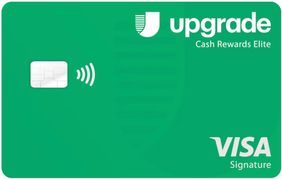 9/2022 $30000 | 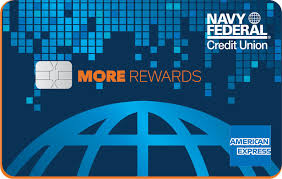 8/2020 $20000 | 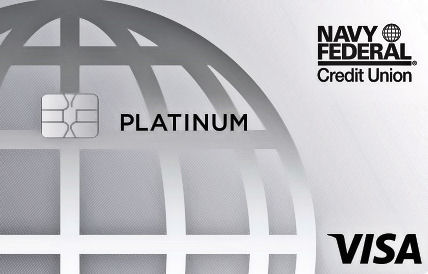 12/2018 $30000 | 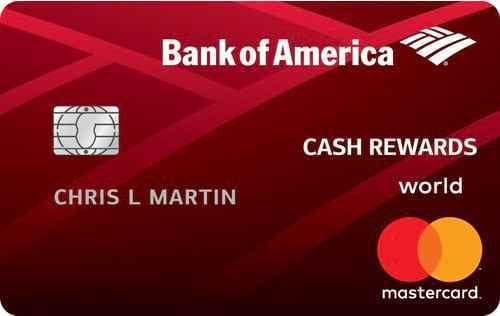 8/2016 $30000 | 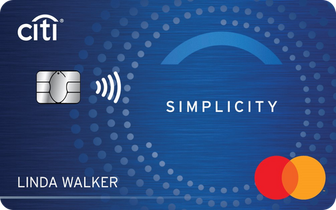 3/2016 $21000 | 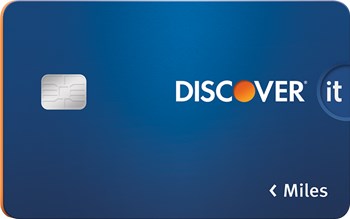 5/2014 $20000 |  10/2007 $8900 |
- Mark as New
- Bookmark
- Subscribe
- Mute
- Subscribe to RSS Feed
- Permalink
- Report Inappropriate Content
Re: Help Paying Down CC Debt
As others have said, the avalanche method is the most cost effective method, as you're tackling the highest APR balances first, and as you pay them off, you free up those payments/interest to apply to the next highest, etc.
The snowball method is similar except you tackle the smallest balances first. This method "feels" good because you're knocking out entire card balances faster especially at the beginning, but it ends up costing more in the end in terms of interest paid.
If you could repost your list with the APR of each card/loan, that will help us decide on a strategy. Also post the minimum payment on each if you have that info handy. You could also use a hybrid of the two methods as well, by paying off some of the smaller balances to get them out of the way (like the Citi Best Buy and Chase Amazon), then avalanche the rest.
If credit scores are a concern, the recommendation to get utilization down on all the cards to 85% or lower will help with that. Bear in mind that some issuers may start balance chasing you as you pay them down, especially if you've been carrying this debt for a while. Don't let this deter you, concentrate on paying down the debt. You can assess the damage and take your next steps after you're out of debt.
Also, don't go running up charges again if you don't have to, since that will just get you back into the situation you're trying to get out of.
I'd save the car loans for last, unless they're high APR loans. Chances are they're lower than your credit cards.
Lastly, see if you can cut some expenses to free up funds toward your debt. For example, canceling or downgrading cable or streaming services, stop eating out, etc.
Open Tradelines: 4 Revolvers, 1 Mortgage / Garden Start Date: 10/1/2021 / Garden Goal: don't have one right now
TCL: $26,500 / AAoA: 8y6m / AoYA: 1y5m / Inqs: 1EX 0TU 1EQ / FICO8 Feb 2023: 848(TU) 843(EX)
- Mark as New
- Bookmark
- Subscribe
- Mute
- Subscribe to RSS Feed
- Permalink
- Report Inappropriate Content
Re: Help Paying Down CC Debt
Hello all,
Thank you for your responses thus far, sorry I didn't provide the payments and APR's. Here they are, so you guys can update/help with a strategy. I was tempted to do National Eebt relief, and do a down payment of 25 percent, but after reading here it will wreck my credit.
Venture APR / Payment - 22.99% - $584/m
Amex APR / Payment - 22.99% - $548/m
Barclay APR / Payment - 14.99% - $248/m
Discover APR / Payment - 14.99% - $115/m
Savor APR / Payment - 23.49% - $147/m
Amazon Chase - 22.24% - $86/m
Best Buy APR / Payment - 25.29% - $58/m
Auto Loan 1 - 10.02% - $509/m
Auto Loan 2 - 15.24% - $469/m
Thank you again, guys.
- Mark as New
- Bookmark
- Subscribe
- Mute
- Subscribe to RSS Feed
- Permalink
- Report Inappropriate Content
Re: Help Paying Down CC Debt
@Anonymous wrote:Hello all,
Thank you for your responses thus far, sorry I didn't provide the payments and APR's. Here they are, so you guys can update/help with a strategy. I was tempted to do National Eebt relief, and do a down payment of 25 percent, but after reading here it will wreck my credit.
Venture APR / Payment - 22.99% - $584/m
Amex APR / Payment - 22.99% - $548/m
Barclay APR / Payment - 14.99% - $248/m
Discover APR / Payment - 14.99% - $115/m
Savor APR / Payment - 23.49% - $147/m
Amazon Chase - 22.24% - $86/m
Best Buy APR / Payment - 25.29% - $58/m
Auto Loan 1 - 10.02% - $509/m
Auto Loan 2 - 15.24% - $469/m
Thank you again, guys.
I'd pay off Best Buy, Amazon and Savor first. They're high APRs plus they're smaller balances so you can knock those out right off the bat. This will also free up $291/month to use toward the remaining debt. Then start chipping away at the Venture and/or the Amex. Those two will take a while, but it'll go faster and faster as you pay them down and the interest charges go down. Then Barclay and Discover last. Finally, hit the auto loans with some extra, especially the 15.24% one.
Option B would be to knock out Barclay and Discover before Venture/Amex, but that is more snowball than avalanche and will cost more in interest, but you would then have more each month to put toward the two biggies.
Can you cut other expenses or take a 2nd job to bring in some extra? If so, that would give you more each month to pay down the debt faster.
Open Tradelines: 4 Revolvers, 1 Mortgage / Garden Start Date: 10/1/2021 / Garden Goal: don't have one right now
TCL: $26,500 / AAoA: 8y6m / AoYA: 1y5m / Inqs: 1EX 0TU 1EQ / FICO8 Feb 2023: 848(TU) 843(EX)
- Mark as New
- Bookmark
- Subscribe
- Mute
- Subscribe to RSS Feed
- Permalink
- Report Inappropriate Content
Re: Help Paying Down CC Debt
@CreditMarathoner wrote:
@Anonymous wrote:Hello all,
Thank you for your responses thus far, sorry I didn't provide the payments and APR's. Here they are, so you guys can update/help with a strategy. I was tempted to do National Eebt relief, and do a down payment of 25 percent, but after reading here it will wreck my credit.
Venture APR / Payment - 22.99% - $584/m
Amex APR / Payment - 22.99% - $548/m
Barclay APR / Payment - 14.99% - $248/m
Discover APR / Payment - 14.99% - $115/m
Savor APR / Payment - 23.49% - $147/m
Amazon Chase - 22.24% - $86/m
Best Buy APR / Payment - 25.29% - $58/m
Auto Loan 1 - 10.02% - $509/m
Auto Loan 2 - 15.24% - $469/m
Thank you again, guys.
I'd pay off Best Buy, Amazon and Savor first. They're high APRs plus they're smaller balances so you can knock those out right off the bat. This will also free up $291/month to use toward the remaining debt. Then start chipping away at the Venture and/or the Amex. Those two will take a while, but it'll go faster and faster as you pay them down and the interest charges go down. Then Barclay and Discover last. Finally, hit the auto loans with some extra, especially the 15.24% one.
Option B would be to knock out Barclay and Discover before Venture/Amex, but that is more snowball than avalanche and will cost more in interest, but you would then have more each month to put toward the two biggies.
Can you cut other expenses or take a 2nd job to bring in some extra? If so, that would give you more each month to pay down the debt faster.
I think this strategy makes the most sense, financially.
I would like to add, having been in a very similar situation, it looks like cash flow is really tight and that will make things difficult. Without factoring in any sort of monthly spend on food,utilities, etc. the minimum payments are almost at or in excess of your monthly income. It may be in your best interest to free up some cash flow and eliminate the 15% interest auto loan. That frees up $469 dollars per month that you can put toward other debt and use for any unexpected expenses. So I would suggest paying that auto loan off with the $10,000 and then use the rest of that money to start paying down your highest interest cards.
- Mark as New
- Bookmark
- Subscribe
- Mute
- Subscribe to RSS Feed
- Permalink
- Report Inappropriate Content
Re: Help Paying Down CC Debt
your DTI is really high and paying everything down to the last threshold isn't going to help that situation that much. I wouldn't really worry about score at the moment because seeking ANY is currently impractical.
| credit cards | -1786 |
| auto 1 | -509 |
| auto 2 | -469 |
| rent | -1825 |
| total payments | -4589 |
| GROSS income | 5496 |
| total | 907 |
in your situation, I would take the 10k and pay off the cars given the implied necessity.
then I would avalanche for 12-18 months to improve your DTI and score.
if you're haven't already, join a credit union or two. set up your direct deposit, use their bill pay, etc and anything you can do to build a relationship while you avalanche for those 12-18 months. at that time seek out a personal loan from said credit union or other friendly lender at lower rates because you're still going to be 50k+ in debt at 20% blended apr.
in the undesirable scenario where you were unable to "roll" ~1000 in monthly payments from the cars into paying off the credit cards and kept paying the ~1800 monthly currently paid towards credit cards, you're looking at a 5-6 year avalanche to payoff.
| apr | balance | payment | nper | |
| Venture | 22.99 | 20450 | -584 | 59 |
| Amex BC Preferred | 22.99 | 18900 | -548 | 57 |
| Barclay Titanium | 14.99 | 10950 | -248 | 65 |
| Discover | 14.99 | 5750 | -115 | 79 |
| Savor | 23.49 | 4970 | -147 | 56 |
| Amazon Chase | 22.24 | 2930 | -86 | 54 |
| Best Buy Citi | 25.29 | 1560 | -58 | 40 |
| total | 65510 | -1786 |
*I always honestly answer these questions as if I was in the situation, given everything I have experienced paying off my own 30k+ unsecured debt over the past three years. I am a nobody, non financial expert obviously.
 9/2022 $30000 |  8/2020 $20000 |  12/2018 $30000 |  8/2016 $30000 |  3/2016 $21000 |  5/2014 $20000 |  10/2007 $8900 |
- Mark as New
- Bookmark
- Subscribe
- Mute
- Subscribe to RSS Feed
- Permalink
- Report Inappropriate Content
Re: Help Paying Down CC Debt
UPDATE -
Well, when it rains it pours. Took my $509/m auto loan into vehicle service today - turns out there is a pretty major issue with it, it's about a $4000 dollar repair, which makes no sense for me to invest right now in that car. I can keep it going for a while before it becomes totally critical, but now it looks like I'm in the market for a high interest car loan soon. I shopped around and it looks like my rate will again be somewhere close to 10%. RIP.
So, near term I'm going to see if I can get those individual thresholds lower, which will help with the debt payoff. I also might see if I can open one new card to get a FICO boost (thresholds) in order to improve my odds of getting approved for a loan, and lower the rate a bit. Good news is I have good amount of equity in the car, so I can lower my payment by almost $200 a month, which will be very useful towards paying off the smaller balance cards, plus the new vehicle will have almost double the gas mileage.
Thoughts anyone?